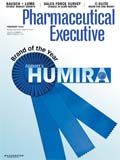Brazil Report: A Bold Player Blooms
Brazil was the last country to enter the fiscal crisis, but also the first to exit. And with a burgeoning middle class and a staunch commitment to national development, its pharmaceutical future is now.
If I were to suggest a title for your report," says Antônio Britto, "it would be, 'Trying to Fly'." Britto, a former state governor and federal minister, and currently executive president of Interfarma, the association representing research-based pharma companies in Brazil, reflects a more optimistic view than in 2007. The last time Focus Reports visited the country, executives were rife with the old saw, "Brazil is the country of the future—and will always be." Now, however, they speak in different terms. Brazil was the last country to enter the financial crisis, and the first to exit. As the host of both the 2014 World Cup and the XXXII Olympiad in 2016, and as a country cleaning out corruption from its highest offices, it is emerging from a decade which saw 40 million of its 200 million inhabitants joining the middle class, and creating a new block of "pharmerging" consumers.

Cover art by Sebastião Rodrigues. Courtesy of the artist.
This bulging middle class, known as "Class C" in Brazil, has been the main driver in Brazil's retail pharmaceutical market, more than doubling to U$26 billion and surpassing countries like the UK and Canada to achieve a top 10 global ranking, projected to reach top 5 by 2015. Indeed, this demographic shift is the result of faster growth and progressive social policies under eight years of a populist Lula government, resulting in record high average wages ($R1,629, approx. U$931 per month) and record low unemployment (6.4%), and less income inequality, with a declining Gini coefficient, the international measure of wealth distribution, from the help of programs like the Bolsa Família, a conditional transfer payment scheme.

Growth has pushed inflation, which is sitting at 6.3%, at the upper range of the Central Bank's 2.5% to 6.5% target, even with the dampening effects of a real which has hit recent highs of 1.58 reais to the dollar. Approaching record levels since the currency first floated in 1999, the real was dubbed by Goldman Sachs as the world's most overvalued in 2009, and it has since appreciated by nearly 10% against the U.S. dollar. All this despite macroeconomic controls by the federal government—without which it's estimated the real would be worth 20% more—outlined by none other than Lula's successor, Dilma Rousseff, who recently reiterated her commitment against speculators in a Financial Times op-ed piece entitled, "Brazil will fight back against the currency manipulators."
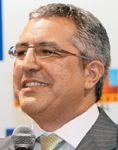
Alexandre Padilha, minister of health
This staunch commitment to national development, and positive macroeconomic indices, have created a perfect storm for rising standards of living, inclusive of expenditures on health. Nilton Paletta, country manager and VP, Latin America for IMS Health, explains the shift. "The one major factor influencing country growth and pharma growth alike is the change in social class distribution. Based on the increased stability of the economic situation, including employment and GDP growth, we have seen Social Class D to move to C, and C to B." In 2010, Class C exceeded 100 million, with Brazil's biggest class comprising over half its population. "This helps increase access and impacts the market's growth, because these people have more income, and if officially employed also benefit from private health insurance, which both contribute to better access to medicines and doctors," Paletta says.
José Correia da Silva, president of ABIQUIFi, an association which represents the producers of pharmachemical and pharmaceutical raw materials, states another important factor is the growth and the development of government healthcare expenditures: "The Brazilian government spends a lot of money on SUS (Sistema único de Saúde/Unified Health System), which comprises a healthcare infrastructure and a strong centralization for the purchase and distribution of medicines."
These expenditures are accounted for in the R$15 billion (US$8.57 billion) institutional market, the counterpart to a US$26 billion retail spend which remains overwhelmingly out of pocket. "The fact is, there is a market of 200 million potential consumers that have just arrived to a medium level of medical attention. Part of the reason for the increase is that the population is so far from a level considered normal by the standard of more wealthy countries. To achieve a level of a Spain, or an Italy, Brazil must double again, at minimum," Correia da Silva notes.
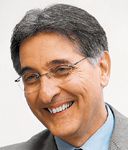
Fernando Pimentel, minister of development, industry and foreign trade
One of the contributing factors to perhaps seeing these figures double again is, interestingly, how the figures themselves are calculated, due to the fact that Brazil has adopted electronic invoicing. IMS's Paletta explains the importance of the changes: "This had made the market become more visible and most likely dramatically decreased informality. This means that we are seeing two elements to the growth figures. One is the real growth, which is when you compare 2011 to 2007 at the same base by looking at how many wholesalers or data providers we had in our panel in 2007 versus the same panel in 2011." The other, which accounts for some 4% to 5% of the 18% year-over-year growth, "comes from the smaller, regional wholesalers and pharmacy chains. They were not represented before in our data panel. Now we can measure the impact of those wholesalers who were not in the panel. Therefore, the market is certainly growing, but at 13% to 15% growth rate, though this is still an important growth."
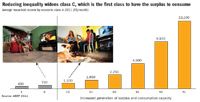
Paletta speaks to the practical repercussions for companies operating in a rapidly growing space: "This has changed market dynamics, because pharma companies used to rely solely on big wholesalers and pharmacy chains. Now they see opportunity to go to the small regional wholesalers who represent approximately 10% of market volume, or some R$4 billion (US$2.29 billion); however, to play in this market opportunity it is required a completely different 'go-to-market' strategy and certainly a customized 'business model' because the market conditions are quite different."
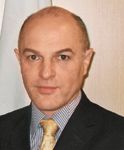
Dirceu Barbano, director, ANVISA
Such conditions are influenced at the highest level by Alexandre Padilha, minister of health, an MD with a history of directing indigenous and malaria health projects, and whose tenure began along with the current administration's in January 2011. "The new government believes that good health and quality of life can be achieved through the cooperation and collaboration of many government sectors and other partners," he says. Padilha affirms that, although assuring access is a challenge, health is a right, and therefore the issue must be addressed: "The Brazilian Constitution recognizes, under article 196, that 'health is a right of all and a duty of the State.' That means that addressing the social determinants of health is both a conceptual and a legal imperative for our government. Brazil firmly believes in universal access and supports all initiatives that promote universal health care."
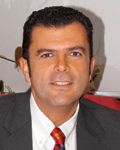
Nilton Paletta, country manager and vp, Latin America, IMS Health
Padilha suggests sustainable and predictable financing, new technologies, and the close link between health indicators to social issues as pillars of the administration's path to achieving the Constitution's lofty goal. His counterpart at the Ministry of Development, Industry and Foreign Trade, Fernando Pimentel, suggests one way: following on the success of courting IBM and General Electric, who in 2010 invested hundreds of millions of dollars in local R&D facilities. Pimentel says it's crucial to attract such international equivalents in the pharmaceutical industry, although "Brazil has difficulties that we need to overcome rapidly, especially in areas of patents, and some specific types of research, such as in genetics, in live-cell organisms, and access to biodiversity. Until these are resolved the answer to this question will be up in the air."

Lauro Moretto, executive vp, Sindusfarma
Jose Bastos, president of MSD, concurs, and refines Pimentel's approach: "Most important among these are the basics—the educational system. It's good, but it needs to be a lot better, and produce many more people in the universities who can perform research." Bastos further stresses private/academic partnerships, such as the kind spurred by the aforementioned multinationals, as well as identifying areas where Brazil is already very strong, to go towards creating a pharmaceutical equivalent of an Embraer, Vale, or Petrobras. "In health, there are areas where, because of the particularities of the country, there is good research, such as in infectious disease. We must better identify those centers and approach them to create a closer relation between them and industry, to improve the visibility of the work they do and further opportunities for cross-collaboration," Bastos notes.
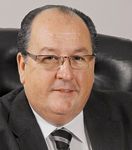
Nelson Mussolini, executive vp Sindusfarma
SHIPPING UP, SHAPING UP
If growth is to continue, a big driver will be more remote locations in the North and Northeast, where there is need to bridge not only gaps in policy, but more literal, physical gaps as well. For instance, Manaus, the largest city in the Brazil's North region (which comprises 45% of the country's surface area), is nearly 2,500 miles from São Paulo in the country's industrial southern heartland—slightly farther than the distance from New York to Los Angeles. These areas, also the least developed, create an infrastructure bottleneck.
Anecdotally, managers joke it costs more to ship from the interior to Brazil's biggest port at Santos than it does from Santos to China. Looking at hard numbers, compared to the 1970s, the country as a whole actually counts fewer miles of railroad. Fortunately, the pharmaceutical industry in Brazil relies predominantly on road transport and air, such as Guarulhos International Airport, Brazil's main hub located on the outskirts of São Paulo, though there are still issues; Atlanta's Hartsfield-Jackson airport, by itself, has more air traffic capacity than the whole of Brazil.
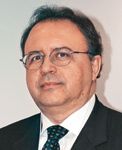
Jose Correia da Silva, president, Abiquifi
Rafael Martau, as the commercial director of Bomi Farma, the country's largest specialized healthcare logistics and distribution provider, whose fleet serves a recently expanded primary facility (from nearly 800,000 square feet to over 900,000 square feet, with a further 160,000 square feet in the last year in Santa Catarina), is qualified to speak on how he hits the road. "It's obvious there is work to be done when trucks are forced to drive on two-lane highways, or even one-way streets," Martau notes. "When we get that fixed, it's an issue of airports reaching full capacity. The biggest worry right now is the following: What will happen—if they are at maximum capacity now—during the World Cup in 2014, and the Olympics in 2016?"
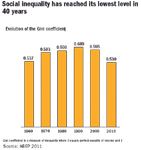
The problem is not only the capacity per se. "Today there is pressure not only on runways but associated transfer infrastructure. Due to ANVISA (Brazil's FDA equivalent) requirements, many shipments are carefully climate-controlled, which means that shipments must be rapidly transferred at the Infraero (a Brazilian government corporation responsible for Brazilian commercial airports) checkpoints upon landing, or we risk losing the shipment. It's a big challenge, and a big worry," he says.

Odnir Finotti, president, Pró Genéricos
Fortunately, according to Martau, in addition to public expenditures on roads and airports, "there are companies like Luft Group, of which Bomi Brazil is a part, which are family businesses with a consistent strategy of investing to take advantage of market growth. In fact, Luft Group invests the most in health logistics in the country, and uses market demand as a way to spur growth and investment. In 2011 alone, Luft Group will invest over R$30 million (US$17 million), and in the past three years, we have invested R$170 million (US$97 million), in not only warehouses, but in truck fleets. By the end of 2011, we will have opened an affiliate in Recife to better serve clients in the fast-growing and remote Northeast of Brazil, because decentralization of stock is another way of absorbing growth." And at Bomi there is much growth to absorb: in 2007, the company counted 16 clients. "Now, we have 52, and the complexity and quantity of our clients is increasing every day," Martau says.
ATTACK OF THE TAXES
The complexity and quantity of Martau's clients is perhaps only matched by that of Brazil's taxes. Somewhat counterintuitively, the country maintains the highest end-user tax burden on medicines in the world, amounting to an average of 33.9% on final prices.
SINDUSFARMA, founded in 1933, represents all the pharmaceutical companies in the state of São Paulo, the country's most economically important state, and a traditional center of industry from which 70% of Brazilian GDP originates. The state accounts for some 80% of the pharmaceutical companies of the country, and associated hospital and academic infrastructure, and SINDUSFARMA is the body which represents the São Paulo industry in front of the government, and negotiates with ANVISA, unions, and tax authorities, in a broad spectrum of influence.
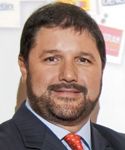
Claudio Bergamo dos Santos, ceo, Hypermarcas
One of those areas of influence it hopes to impact is taxation. Nelson Mussolini, executive vice president of the association, is mystified when asked to explain. "We don't understand why," he says. "It's completely crazy. Looking at the rest of the world, the average rate is 6.3%. In many countries, like the U.S., Canada, and the U.K., the number is 0%."
Amazingly, even veterinary products are taxed at a lower rate, which gives rise to the common joke: If you go into a pharmacy and bark, you pay a lower price for your medicines.
Lauro Moretto, SINDUSFARMA's other executive vice president, invokes a French muse, maybe in the hopes that the government will respond to another language: "I saw one proverb in a French review many years ago: 'Rien n'est bon pour l'homme qui souffre,' (Nothing is good for the man who suffers). Therefore, while there are still many people who suffer, what we are doing is not enough.
And nor, Moretto says, is the government. According to him, they have no strategic plan. "When you return to the past, say 20 years, there was big inflation and big social problems," Moretto notes. "These have been solved, but now we need to reorganize the government and decide how they will act with the important sectors, and how they will promote and develop social organizations. Lula's took the direction of assisting the people in the most need; now it's time to take the next step."
That next step was most clearly evinced in the first months of Rousseff's term, when she fulfilled a campaign promise to reduce taxes to bring medicines to the most vulnerable. The result, in February 2011, was the announced reduction of a copay in Farmácia Popular (a government program offering low-cost drugs for low-income citizens), for the most important strategic areas of diabetes and hypertension, in a program called "Saúde Não Tem Preço."
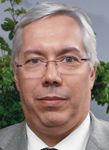
Rubens Lima, general manager, Ipsen
Assuming office in January 2011, Rousseff has stated the government's No. 1 priority is poverty reduction, and such programs will clearly contribute to this end. Some 16 million people, a staggering 59% of whom live in the Northeast (which accounts for just 28% of the population), live on R$70 (US$40) or less per month. Therefore it is unsurprising that, because of their lower price, generics are expected to surpass 20% overall market share by year-end, and have achieved 53% annual growth in the past year. Reducing corruption, which has seen in 2011 the resignation of six ministers, including those of agriculture, transport, tourism, and most recently sports, will see Rousseff consolidating her government to take that next step.

Hagop Barsoumian, general manager, Chiesi
CONSOLIDATION NATION
Providing her a helpful example will be the pharmaceutical industry's consolidation, plowing ahead in full force. Significant M&A activity in the past year includes MNCs like Amgen, Pfizer, and Sanofi, as well as domestic firms like Hypermarcas, which made 10 acquisitions in 2010, and acquired Mantecorp (a top 5 domestic player) for US$1.5 billion. Perhaps no one else is better qualified to speak on Brazilian consolidation than Claudio Bergamo, CEO of Hypermarcas, Brazil's largest consumer goods company, which with an annual turnover of over R$5 billion (US$2.86 billion), more than any of its national or international competitors in the country. Speaking about the pharma sector, Bergamo says, "Historically, the market was very fragmented, with more than 50% of total market in the hands of Brazilian companies. Hypermarcas saw the opportunity to consolidate many successful family owned companies that were going through succession issues. Previously, these companies competed against each other, not taking advantage of the synergies that would have existed if they were grouped under the same platform."
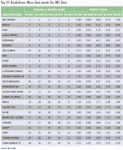
Top 25 Breakdown: More than meets the IMS Data
Bergamo has fostered this platform in Hypermarcas' rapid ascent, which has seen close to 25 acquisitions since April 2008, when it became public. He has continued to further develop many of these companies—and together they have the country's largest number of product launches, supported by "heavy investments on field sales forces, efficient operations, strong distribution, and demand generation," Bergamo says. Now, however, with an average industry EBITDA hovering at 20, he is easing up on the buying spree. "There are still some opportunities remaining for further consolidation, but we do believe we have acquired the best assets available in the last years.
Hypermarcas M&A strategy was to acquire the best companies, which could be further developed—and not 'bargain' situations. Nowadays, if you go into a drug store, there is not a single section where Hypermarcas doesn't have a product—diapers, cosmetics, men's and women's care etc—extending through OTC and generics. And, in many of these markets, we have relevant market shares and leadership positions," Bergamo notes, and highlights the company's dominance: the best portfolio of businesses and brands in all major relevant markets, being the No. 1 in OTCs, No. 1 in branded generics, No. 2 in Rx, No. 2 in dermo-cosmetics, No. 1 in condoms, and No. 1 in sweeteners, among others.
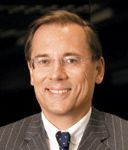
Alexander Triebnigg, president, Novartis
Eyeing the Top 25 players in Brazil (refer to chart on page S12. This retail data; granular hospital records are not kept), one sees familiar faces: Sanofi, Novartis, GSK, Pfizer—although none of these is ranked at or above its global position. But the real story is the rapid advancement of local players like Neo Quimica (No. 7), Teuto (No. 13), Germed (No. 24), and LeGrand (No. 21); the continued independence, despite acquisition attempts, of some of its marketshare leaders such as Cristalia and Mauricio Billi's Europharma; and the surprising dominance of domestic firms, as well as the fact that few remain independent. EMS's lead is even more dominant than a No. 1 position for the last five years suggest; Germed and LeGrand are both brands of EMS. Hypermarcas acquired Neo Química in 2009, and owns Mantecorp (No. 20), while Sanofi now owns Medley (No. 2), and Sandoz (No. 16) is, of course, under Novartis. With further "pharmarriages" likely in the works, this list will become even smaller—and even more inbred.
EXPORTATION EXPECTATIONS
Representing some 40% of the Latin American pharma market in value and consumer figures, Brazil is a natural hub for production—although currently exports are dwarfed by imports to the tune of over US$5 billion per year, a deficit that is growing fast and will only grow along with Brazilian's needs for more complex treatments manufactured abroad. With a strict regulatory body in ANVISA, manufactured products provide a regional regulation reference, which can help ease location decisions.

Rosa Maria Scavarelli, president, Theraskin
However, the country has yet to develop a strong domestic API production level, and many say it has already missed the boat. However, others claim that internationalization, rather than exportation and raw imports and exports, should be the concern. Mussolini breaks it down. "Looking at other countries in the world—U.S., Canada, most of Europe, etc.—it's normal for a negative pharmaceutical trade balance," he says. Mussolini, addressing the state of API exports, notes, "It's different in China, India, and Ireland. It's natural to import more pharmachemical products than you export, because you need capacity and economies of scale," he continues, while discounting the notion that this is necessary in order to compete. "We don't have markets for it in Brazil. We need to produce and export products here for Latin America, Asia, and Africa. These are our markets and it's foolish to believe otherwise. Africa is an easier and more comfortable market for Brazil, where among other advantages, in countries like Angola and Mozambique, we speak the same language."
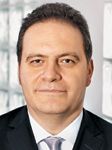
Heraldo Marchezini, senior vp, Sanofi Latin America, and general manager, Sanofi Brazil
Indeed, it's put succinctly by Alexander Triebnigg the head of Novartis Brazil, the country's third-largest healthcare company, and the largest global research-based pharmaceutical company, which has been in Brazil since 1937, and may have gained an institutional insight or two into the local psychology: "As a general rule, it is not easy for Brazilians to leave their country, but it is a key step in the development of a global perspective and a global career, and also of coming back into a leadership position." Triebnigg encourages his colleagues "to think about Switzerland, a small country, yet, with Roche and Novartis, home to two of the world's largest pharmaceutical companies." Triebnigg explains this unlikely occurrence: "Novartis and Roche do not define themselves as local but [rather] global companies. So the path to a sustainable future for leading Brazilian companies in such an exciting and fast-growing domestic market is to ask: Where else can I go? Where else can I grow and invest the money I have earned here?"
This shift requires what Ogari Pacheco, president and founder of Cristália, might rightly call "radical innovation." As an international defender of radical innovation at the local level, he responds to the difficulty of thinking outside the box in Brazil. "Let's suppose that the four of us are representatives from multinational companies, and outside the door there are many small companies present in the market. If we all agree the idea that radical innovations are extremely difficult to produce, that it takes many years and around US$800 million to US$1 billion to create a new molecule, then very few of them will have the courage to do it. So it will be only the four of us, because we have the capacity and money to invest, who will go on this road of radical innovation. For this reason, most of the small companies do not even try to create innovations. But sometimes, an exception can occur with a company like Cristália—which innovations without spending US$800 million for a new molecule. This metaphor that I am using is not the absolute truth; it is my personal truth as the founder of Cristália."
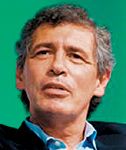
Jose Bastos, president, MSD Brazil
Pacheco has also been courted internationally, and wryly observes, "I have decided that I should stop having so many dinners; otherwise I will never manage to stay fit." Jokes aside, however, Pacheco says "Cristália is the beautiful girl on the market at this moment, which every young man wants to have. Besides being a beautiful girl, Cristália is also a serious, responsible family girl—so not every young man can have her. Therefore I will pay a lot of attention to whom I will give her to, if she ever leaves the family."
Still firmly in the family is Theraskin, purveyor of high aggregate value products, which target the Class A and B, and bold plans to bring its dermatological expertise outside of Brazil, throughout Latin America and overseas. "Our R&D has developed, and we plan to develop even more, bringing more innovation either with what we do here ourselves, or through alliances and partnerships with German, French, and American companies," says president Rosa Maria Scavarelli. "We have capacity, and we plan to expand this even more. If a company wants to be in this market, and needs the profile Theraskin has—not necessarily products with big volume, but ones with high degrees of innovation—we are the ones."
Scavarelli, whose father, Basílio Scavarelli, the founder of the company, is 101 years old, gives perspective to these potential partners: "He began in the pharmaceutical industry in 1930, and is still alive, in the office every day, and making plans for the next 20 years! Our history is the best proof of what we are—so Theraskin is here to stay."
GENERIC SERMON
Many of the biggest current producers do so in generics, and Odnir Finotti, executive president of Pró Genéricos, sheds a light on why this might be. "For the time being, 90% of the Brazilian [retail] market is out-of-pocket, therefore all these people need to have access to affordable and trustworthy medicines, and this is what generics is all about. Today, many more Brazilians have access to pharmaceuticals, so people are taking better care of health than ever before thanks to generics," he says. Furthermore, Finotti explains the rationale for domestic firms targeted as acquisitions from international players: "It's about market size and upside potential. We're talking about the seventh-largest market in the world, and increasing. According to the latest data from IMS, by 2015, Brazil will be No. 3 in generics. It is a quite strong reason to acquire a generics company in Brazil. If you do not produce here, or control the columns that keep generics standing, you are not in the game. Brazilian companies learned very quickly how to play in generics. We can compete worldwide on the same base in cost of development and formulations, etc. In this, Brazil has the expertise. Some of the largest companies in Generics are not present in Brazil yet, for they cannot simply bring its entire portfolio from elsewhere. You need to be here—plant here, manufacturing, developing formulations, etc., here."
Case in point: Sanofi. With the Brazilian operations boasting the largest production outside the company's historical French borders, Heraldo Marchezini, senior vice president for Latin America and general manager Brazil global operations, can boast of steering the crown jewel of the company's emerging market portfolio. However, Sanofi is not merely a fair-weather friend. Speaking to the importance of long-term commitment, and actually being Brazilian, Marchezini says, "There is an understanding one achieves from knowing where a country has been, and how we've gotten to where we are today. This is especially important in the pharma market, because there has been a tremendous transformation in recent years in the way it operates. If you would have come in the 1990s, you would have found many companies that had left Brazil due to a tough economic situation, and a complete lack of patents. (And, as an aside, this is why I don't complain about ANVISA, having seen what we had in the past!) Underlying all these changes is a significant process you have to understand: the generics law, which was put in place in 2000; the patent law in 1996 when Brazil entered the WTO; and the Real Plan in 1993. These are elements that it's possible to understand unconsciously, if you are Brazilian, about how the health is understood by policymakers, agencies, and the population. It's interesting, because perhaps only in answering this question do you realize how important it is!"
Other than the local touch, Marchezini highlights the company's adaptability to many different markets as a key success factor. "We have a really diversified approach, which spans from generics, to OTC, consumer goods, prescription, mature products, vaccines, Genzyme—the company goes from the basic to the very high tech, to oncology, and everything in between. The reality is that you have to adapt to local needs. Brazil has a demand for everything; it's a matter of how you manage this. There's much more volume, and our industrial presence is significant, because we have medicines that really fit into the vast majority of the population's needs," he concludes.
REGULATION CONSTERNATION
Dirceu Barbano is the director president of ANVISA, and in 2011, he was re-elected to a second, and final, three-year term, and will remain director until 2014. In this time frame, will he be able to shed the regulatory body's reputation, which naysayers lament as lacking speed? "We're speaking of two types of performance here," he quips. "One is related to quality and rigor in our regulatory actions. The other is about efficiency. ANVISA can accept that the performance of rigor interferes with the efficiency, but not the other way around. ANVISA counts over 2,000 workers who seek to preserve rigor while enhancing efficiency. There are cases that indicate a way to make these two performances closer. This involves an improvement in norms, and searching for a focus on health risks," says Barbano, former director of the committee that introduced Farmácia Popular. He elucidates the public stance: "We have a very clear orientation from the government, and it is one you will hear from the Ministry of Health: Every time there is a question of whether to put public- or private-sector interests first, we don't hesitate for even half a second to opt for the public interest."
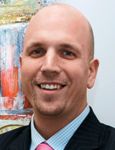
Giles Platford, general manager, Nycomed Brazil
With noble talk like that, companies are bound to be slightly frightened. And the reputation of ANVISA as a red-tape-ridden bureaucracy is legend. But it depends who you ask. Martin Nelzow, president of Boehringer Ingelheim Brazil, the country's fastest-growing MNC, is unambiguous. "I cannot blame the government at all for delaying registration; the opposite is true, in fact." According to Nelzow, Boehringer Ingelheim has received all its registrations before schedule. "It's time to forget certain past prejudices. Of course, one can always choose to submit the dossier, wait, and blame—but Boehringer Ingelheim prefers to be more creative."
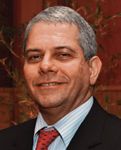
Devaney Baccarin, vp and general manager, Astellas
Nelzow elaborates on a special case study: "We have had two very interesting situations of submitting a truly innovative drug, where Brazil would be the second or third market in the world with this particular compound. We approached ANVISA and suggested, Why not organize a panel? Call all the people you believe should have questions or issues, and we will also ask the people from the medical societies, our researchers, and technicians. We put all these people in one room for a one-day discussion and it was done. In terms of innovation I cannot say that ANVISA is delaying, and our relation with them has been absolutely reasonable."
And clearly ANVISA has not stunted Boehringer Ingelheim's growth, posting year-over-year figures of 14% in 2011, and boasting household brands such as Buscopan and Anador in the top-selling therapeutic classes of analgesics, and Micardis, an antihypertensive, also a No. 1 brand in growth in 2011.
Rubens Lima, general manager of Ipsen Pharma Brazil, takes a different tack. "It's important for Brazil to attract international investments, to better evaluate the impact of administrative burden and approval timelines, and align these standards to international benchmarks," he says. "It's a myth that there's an inverse correlation between rigor and efficiency—the two are not linked. Look at the FDA: very rigourous, yet with much faster timelines, while ANVISA and MoH processes, even rigorous, are by far longer and lead to significant delays in product launches."
Roberto Alvarenga, general manager of Ferring Pharmaceuticals Brazil, weighs in nicely, noting, "I think the industry needs to be fair with the government. There are some mistakes from pharmaceutical companies. Sometimes the quality of the dossiers submitted is not good enough. We need to be fair here; often the industry fails in this basic regard. Companies need to, at minimum, prepare good enough dossiers to approve, although this is only a concern for some companies." However, he puts a qualifier on his kindness, and stresses that, "yet another issue is I don't believe the government has the right size, in terms of numbers and quality of staff, to evaluate all the submissions."
EURASIAN INVASION
Giles Platford, formerly leader of the legacy Nycomed business in Brazil, and who, in October 2011, assumed the presidency of Takeda/Nycomed in Brazil, will preside over a mingling of cultures. The UK manager, with experience in China and Southeast Asia, heads a company which can now trace its roots back to Norway and Japan, and has strong prospects in Brazil. "Our Brazil operation became the second-largest affiliate worldwide for Nycomed in 2010, following a strong performance that positioned us as one of the fastest-growing multinationals in the Brazilian pharma market (IMS retail audit)," says Platford. He explains this success by highlighting the flagship product, Neosaldina, which ranks among the top 3 pharmaceutical products in the country. "Representing 25% of our total sales, and growing ahead of the branded analgesics market, certainly Neosaldina is an important driver for us. This is a brand that we have continued to reinvent year after year with creative marketing campaigns, and alternative strategies to work with the point of sale (POS)," Platford says. "In fact, last year our Neosaldina campaign in Brazil was recognized by Nicholas Hall (a specialized OTC marketing company) as the best OTC marketing campaign worldwide. This was the first time a Brazilian brand has won this prestigious award, and I believe it is a testament to the creativity of our OTC marketing team," he continues, which will do wonders to fill the state-of-the-art facilities in Jaguariúna, currently at 70% utilization on a three shift basis. With a modular design and 30 million units of capacity remaining, internal growth plans and potential contract manufacturing can both be accommodated, with cGMP certification and a track record of exports to the EU and various LATAM countries have attracted big names like J&J, P&G, and BMS.
LOGICALLY BIOLOGICAL
With the passing of the legislative amendment RDC 55/10 governing biosimilars in December 2010, ANVISA and its stakeholders are pinning hopes on doing for the biologics market what the generics law of 1999 did for the generics market. When asked if he shares this optimism, Francisco Piccolo, managing director Biogen Idec Brazil, comments: "Biogen Idec has been very close to ANVISA and part of the discussions through Interfarma to provide our perspective on the biosimilar and biological regulations the government is now just about to be finalizing. In our view it's always good to have increased access to the best therapy possible for patients. Our perspective is always trying to focus on the benefit of the patient that is going to be benefitted by the regulation." Piccolo lauds the government for going in the right direction to increase access, and talks about the contribution his company can make: "The company has been very well-known and recognized as a company that innovates in the biotech segment, particularly in neurodegenerative diseases, more specifically in multiple sclerosis. Our vision of providing cutting-edge science to increase quality and length of life is always going to be the direction for the company. Research and development are important parts of our corporate DNA."
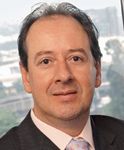
Francisco Piccolo, managing director, Biogen Idec Brazil
Piccolo points to the success of Tysabri's launch in May, which was made part of the reimbursed MS medicines by the government to treat relapsing remitting forms of the disease, and looks forward to 2012, which will see the introduction of Fampyra, which lends patients increased walking capacity, and Avonex Pen, which is the self-injected version of Avonex, being the first alternative of an IM self injection of an interferon. In 2013, Biogen Idec also plans to launch the BG-12 which is the innovative oral form to treat MS, and farther out, looks to finalize its first effective therapeutic option for a highly threatening neuro-degenerative disease, amyotrophic lateral sclerosis (ALS). "Later, the company will also enter into the haemophilia market, providing innovative forms of recombinant and long-acting FVIII and FIX," Piccolo concludes.
But what of manufacturing? "Brazilians usually prefer products ready for commercialization," says Avi Meizler, an architect by training and president and founder of Meizler Biopharma. However, Meizler is not a usual man—he's decided to jump headlong into building a biotech manufacturing plant. "Meizler wants to be among one of the first companies in Brazil in the manufacture of biotechnology products, but even this wasn't enough—and we have decided to also enter into development, which is even rarer in Brazil, which traditionally has not had the mentality for this," Meizler says. On the back of these investments, he expects to, at minimum, quintuple the company's size in the medium-term. And in what can surely be prefaced with the disclaimer of "no pun intended," Meizler sums up his company's strategic thrust as such: "To borrow an expression from my architecture days, Meizler is now building a solid foundation for the future."
AWARENESS, AWARENESS, AWARENESS
One insidious problem haunting Brazilian healthcare is, perhaps anachronistically, alluded to by Schopenhauer: "Talent hits a target no one else can hit; Genius hits a target no one else can see." If there's truth to that, the genius will have to open policymakers' eyes. As Piccolo claims that, even with a disease as well-known in North America as multiple sclerosis, in Brazil, "awareness is still very poor in general terms. It's still very common for people to confuse multiple sclerosis with simple sclerosis, which is linked to some kind of dementia for the elderly population." Piccolo points to education, awareness, access to the right information, and campaigns like his company's own "Viver Bem Faz Bem"—living well makes you feel well—to reach out to the 30,000 Brazilians with multiple sclerosis, of which only 10,000 are being treated with disease modifying therapies. "We usually say this number should be doubled, at least. The other 20,000 are simply not being diagnosed," Piccolo says.
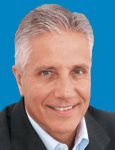
Claudio Coracini, general manager, specialty pharma, Shire
Hagop Barsoumian, general manager of Chiesi Brazil, says that although asthma competes for resources that are already allocated to hypertension and diabetes, only people suffering from hypertension and diabetes already know that they have basic medicines supplied by the government. "Asthmatics," he says, "do not realize they have access, and it will take some time to make them aware. Chiesi has the production capacity established, and we think the demand will increase over time. We will be prepared to supply the government with our drug because it is the basic drug for asthma treatment."
This preparation dates back to 2004, when, Barsoumian says, "the federal government decided to buy a huge amount of sprays, and, at the time, Chiesi sold 1.6 million units to Brazil—basically sprays for the whole country. That was the time they decided to update their plans and make investments." However, the situation changed. "After that, the federal government decided to no longer buy directly, and the rights to purchase went to the cities. The federal government and the states put some money in, and then the cities were told to play their part. What you have today is underperforming, and the result is that asthma is still not well-treated in Brazil," says Barsoumian.
In ADHD (attention deficit hyperactivity disorder), the situation is once again repeated. "The treatment rate is very low in Brazil," says Claudio Coracini, general manager of specialty pharmaceuticals at Shire Latin America. "It's a relatively new disease, and awareness is low among stakeholders. Therefore it is our role to educate everyone involved around the disorder. On the other hand, it's important to note that ADHD treatment has been growing at 30% average annually, compared to 12% growth in the pharmaceutical market overall. This is somewhat due to an increasing trend of parents becoming more comfortable bringing their children to doctors for ADHD treatment." And though Coracini is still in the early days after 2011's launch of Venvanse, he believes that, "within five years, we expect Brazil to become the third or fourth market for Shire, and a top 5 ADHD market." And if anyone could make it happen, it is Coracini, responsible for introducing Cialis in Brazil, which has remained in the top 3 best-selling drugs, and had far surpassed Pfizer's Viagra long before sildenafil's patent expired in 2010.
ORPHAN DRUGS: PLEASE, SIR, CAN WE HAVE SOME MORE?
Claudio Santos, general manager of HGT (Human Genetic Therapies) and Coracini's counterpart at Shire, has already illustrated the Dickensian desire for more, having grown from six people at the end of 2007, to nearly 100 at present. But Santos' main focus is on another orphan-related topic. "For HGT, one very important element is the basic regulatory framework, because there is none for orphan drugs or rare diseases. Today, the rules are the same for orphan drugs as with blockbuster drugs targeted to GPs, which means that there is significant investment and development that still needs to be done to improve the infrastructure and regulatory framework around orphan drugs," Santos says.

Claudio L. Santos, senior regional director, medical affairs, Shire
Although there are some exceptions, notably Gaucher Disease, which is already covered by the official health system, Santos wants to foster the development of official clinical protocols for diseases like MPS II and Fabry—not only for Shire's therapeutical alternatives, but for all therapies available for lysosomal storage diseases. "We are working along with Interfarma because there is not a single focal point in the MoH or ANVISA to discuss orphan drugs," Santos says. "It's hard for us—because it simply doesn't make sense."
SWING YOUR PARTNER: DOING THE SAMBA SQUARE-DANCE
"Many companies are looking for good partners in Brazil. Why? The big companies are in Brazil. But many middle and small sized companies are looking for a certain kind of partner to enter in Brazil. What kind of partner? An ethical partner with experience. Then the question inevitably arises: Why not choose a Brazilian company?" asks Fernando Loaiza Sotomayor of Bagó Brazil.

Mr. Guillaume Drianno, country manager, Servier
It seems like a logical question. "The answer," he says, "is because most of the Brazilian companies operate only in Brazil. The necessity today is to cover South America: treat all countries as a one. Who is in all of them? Of companies based in Latin America, only Bagó. Others may be in Argentina, Mexico, and Brazil, but Bagó is present in Chile, Ecuador, Peru, Bolivia, Paraguay, etc." Though present in oncology, cardiology, and OTC, Loaiza Sotomayor gives the example of Keflex, a former product of Eli Lilly's, which after three unsuccessful launch attempts it finally decided to sell the brand in 2005. Two years later, Bagó owned Keflex, and was told the impossible couldn't be done: increasing sales on a product with 15 other branded generic competitors; decreasing all expenses, sampling, and distributor's discount. Yet within one year Bagó was generating far more money for the product. "I don't want a big factory or a big sales force. I want a big profit," says Sotomayor. "I want to create a structure into which I can put products, and each one will contribute profit. Recently, I visited one of Brazil's largest generics companies. They were proud to have volumes in the millions and millions of units. But what's their profit? 0.01%! Bagó is a micro-company by comparison, yet earns the same amount of profit. Brazilian people tend to have overarching ambitions—'I want to be No. 1 in the world!'—while losing sight of the true goal."
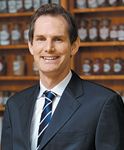
Otto Phillipp Braun, managing director, B.Braun
Other companies look to the government as strategic partners. As Cesar Rengifo, managing director of GlaxoSmithKline Brazil emphasizes, "GSK is always trying to follow the government agenda, and adapting the strategy toward what the Brazilian government needs and what we believe is the future, to work together to make good achievements in this direction," which may sound like a modest assessment of a longstanding government collaboration dating back 20 years, with high-profile agreements making international impact, such as a multibillion-dollar tech transfer agreement to manufacture Synflorix, a pediatric pneumococcal vaccine. Speaking about Synflorix, Rengifo notes, "that deal is probably the most visible, but GSK has similar achievements in every area. When you have an agenda of diversification, you must take advantage of all the opportunities available in the market. We didn't start at US$2.6 billion right away—we started 20 years ago with technology transfer." And he points out that the Brazilian government uses the Hib Vaccine transfer, already a reality, as a benchmark standard. What's next for GSK in this field? "Following Synflorix, GSK has moved further into R&D, and now corporate research on the Dengue vaccine is a codevelopment with Fiocruz, and we remain very optimistic on that partnership," says Rengifo. "We are in the enviable position of having a headstart on other companies which may be trying to start partnerships from scratch."
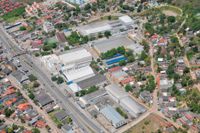
B.Braun Facility
Such a headstart is clear when talking with Roche Brazil, which although has been in the country for over 80 years, and positioned as the No. 1 company in Latin America based on its primary care portfolio, has had to play catchup on the government side. Since 2009, Roche has repositioned itself in Brazil, restructuring, hiring, and increasing competitiveness—but, according to Adriano Treve, director president of Roche Brazil, "one key factor is that we started discussions and collaboration with the government which we did not do before. The government is an important customer for us. It's just that we had little experience to collaborate with the public sector." Talking about a rapprochement, and whether the government can move closer to industry, Treve says, "The willingness is there for sure. The question, as everywhere in the world, is about prices? There are two opposing positions: the government has no or little money to spend, and their budgets are under pressure, and we need to make sure we give access to patients to our products. If we go along our own paths we will never meet. So we need to meet somewhere in the middle so we can both achieve our goals." Now, however, "the top priority is to have a good working relationship with the government."

Cesar M. Rengifo, president, GSK
Rengifo can offer advice based on his experience at the head of that learning curve. As he explains, "the strategic intent of the government is quite sound. Politicians want to give more healthcare to the population, and they recognize the need to move faster and put money behind the decision, and that private industry must work side by side with the government to make it happen. Of course, GSK is always pushing innovation, but at the heart of all we do is driving access for patients to our medicines and vaccines."
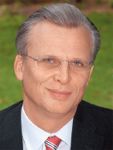
Adriano Treve, director and president, Roche
Addressing the ever-touchy issue of pricing, Rengifo seems nonchalant. "This has led to decisions like in antibiotics, where we decreased prices by 60% to open access to more patients," he says. "What we've found is that the volumes compensate, and now we're competing head-to-head with generics—and winning the battle with our brands. We've shown that if we make adequate moves in line with the government and the market we can win the battle," Rengifo concludes.
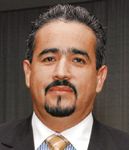
Manuel Fernando Loaiza Sotomayor, president, Bagó
Loaiza Sotomayor concurs on this cooperative spirit, and offers a friendly message to those looking to enter: "I invite them to know Brazil, a large and very nice country with a high level of competition. A place where you can learn a lot of concepts and strategies that are not in any book or university. Working here is a great experience that makes you a stronger and better person. Of course, this is mainly due to the great heart of the Brazilian people. It's difficult, and often complicated, but you learn a lot. Some years here is more than a Harvard MBA!"
